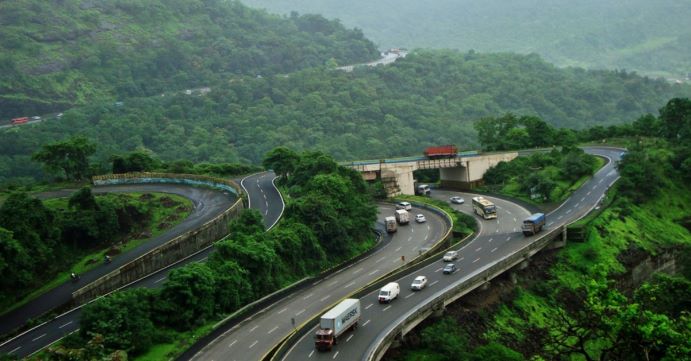Highlights of Pune Environment Status Report (ESR)
 Pune Tops the list of most liveable cities in India
Pune Tops the list of most liveable cities in India
Households with solar water heaters double
Households using solar water heating units have almost doubled in the city in the last five years, the civic body’s Environment Status Report (ESR) for 2018-19 has revealed.
In 2019-20, over 40,115 households with solar water heaters opted for the tax rebate benefit. The number of such households in 2015-16 was 21,731.
The report, tabled by the Pune Municipal Corporation stated that over 1.5 crore units of electricity were saved because of the use of solar water heating units by 40,515 households. It added that there has been a steady increase in the number of properties opting for tax benefits following the installation of solar water heater units.
The highest increase was reported in the current financial year, which saw the installation of the solar units by 7,600 additional properties as against 32,915 properties the previous fiscal. The civic administration has announced up to 10% rebate in the property tax for installing rainwater harvesting, solar and vermicompost units. The administration offers 5% property tax rebate if one of the units is installed. The rebate goes up to 10% for a property opting for any two units.
Incidentally, the corporation now has the capacity of generating 1.2 MW of solar electricity with 34 municipal properties being equipped with rooftop solar power systems. The civic body had set a target of generating 1 MW solar power for the financial year 2018-19.
The civic body had planned to save on Rs 1 crore per year on its electricity bills, if the solar power generation initiative proved successful.
100 ‘good’ days as per AQI
The Environment Status Report (ESR) for 2018 shows that there were only 100 “good” days in the city, according to the air quality index (AQI).
According to the report, the air quality of the city was poor on two days while it was satisfactory for maximum days in the previous year.
In ESR 2018, the civic administration, on the basis of data provided by Indian Institute of Tropical Management (IITM), stated that the air quality was “very poor” on November 8, 2018, and “poor” on January 30, 2018.
The AQI for PM2.5 was “satisfactory” for 168 days, “good” for 103 days and “moderate” for 92 days. The AQI with reference to PM10 was “satisfactory” for 157 days, “moderate” for 108 days and “good” for 100 days.
The maximum amount of PM2.5 was reported in Katraj in January and February 2018.
The concentration of nitrogen oxide was reported to be maximum in Lohegaon. It was above the normal standard in Lohegaon in February, March, April, May, June and September while high in Shivajinagar in October, November and December. The concentration of ozone, carbon monoxide and sulphur dioxide was well below the standard level.
Number of new private vehicles drops for first time, Public transport popular
The ESR report shows a drop in the number of two- and four-wheeler vehicles for the first time in at least 20 years.
The report also publishes data that claims to show that the use of public transport has increased. However, private taxi and cab-sharing services like Uber and Ola are considered public transport in the report; as are autorickshaws.
As per RTO data referred to in the ESR report, a total 2.61 lakh vehicles have been registered in 2018-19, as compared to 2.89 lakh vehicles registered in 2017-18.
According to PMC general body, instead of buying vehicles, citizens are preferring to hire cabs.
Cab numbers are also increasing, as per numbers released in the ESR. In the year 2016-17, there were 10,076 private taxis registered with the RTO, but now, in 2018-19, the number of cab registrations have increased to 35,076. The same trend is observed with autorickshaws.
A total of 45,004 auto rickshaws were registered with Pune RTO in 2016-17. In 2017-18 it went to 53,227 and now, total rickshaw registration in 2018-19 is 69,271.
As per the ESR data, in the year 2018-19, a total of 1.76 lakh two-wheelers were registered. That is down from 2017-18, when 2.05 lakh new bikes were added to the city’s roads.
The same for four-wheelers. A total of 47,617 four-wheelers were registered in 2018-19, down from 56,401 cars registered with the RTO in 2017-18.
The report also states that the use of CNG (compressed natural gas) for vehicles has increased in the last few years and there is a need of more CNG stations in the city, along with encouraging residents to use CNG vehicles.
The PMC has also introduced e-buses to the fleet of Pune Mahanagar Parivahan Mahamandal Ltd (PMPML).
The use of public transport for long distances also increased. A total of 7.81 crore residents travelled by the rail in 2018-19 as against 7.77 crore in 2017-18.
The increase in number of passengers taking flights continued in 2018-19. A total of 88.82 lakh passengers took domestic flights in 2018-19 as compared to 79.59 lakh in 2017-18.
The number of domestic flights also increased from 53,705 in 2017-18 to 57,362 in 2018-19. The number of international flights from the city reduced to 2,132 in 2018-19 from 2,316 in 2017-18, which also resulted in a drop in passengers from 2.73 lakh to 2.51 lakh.




